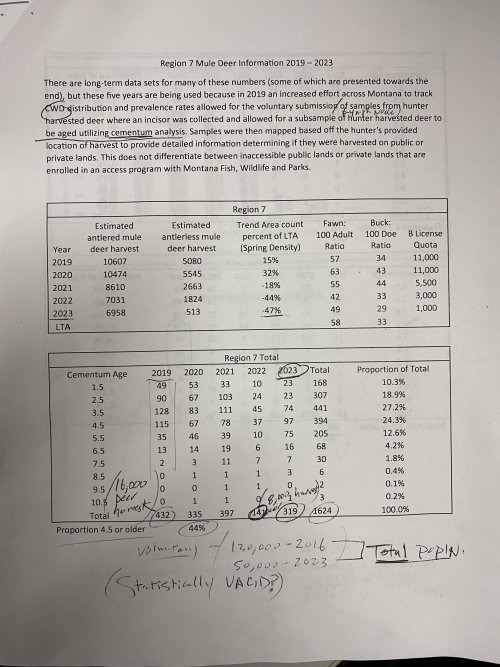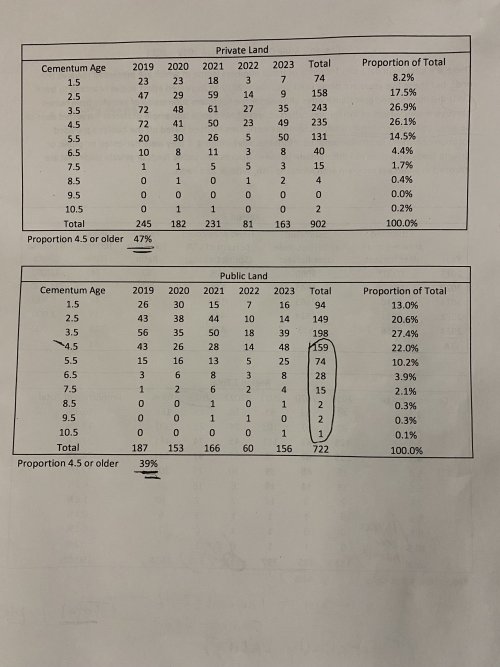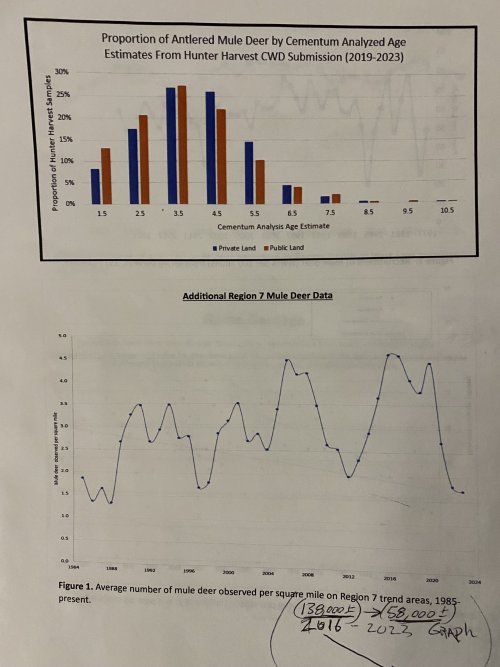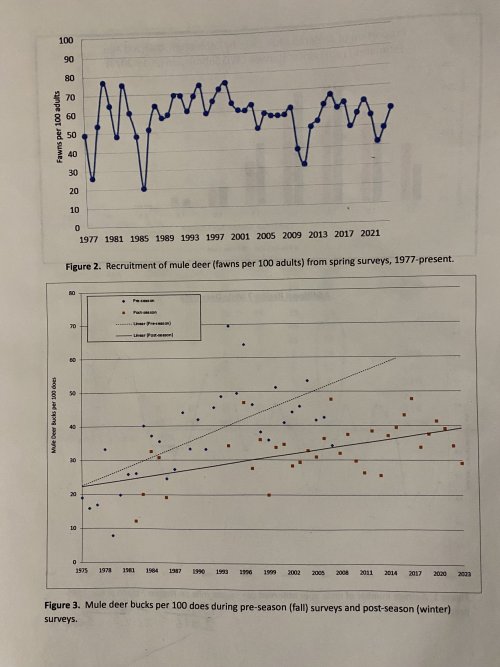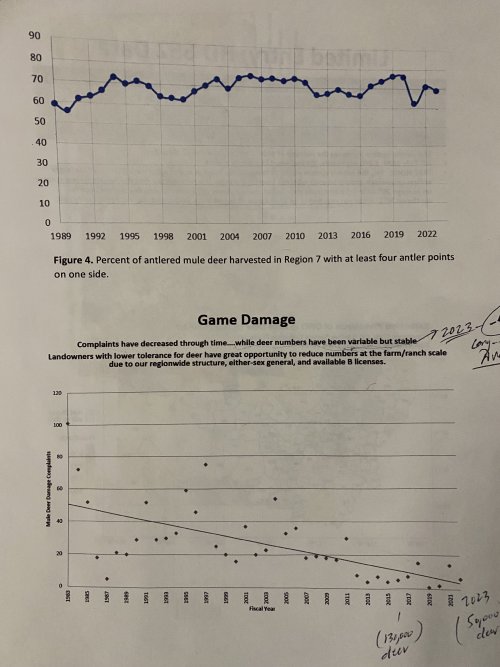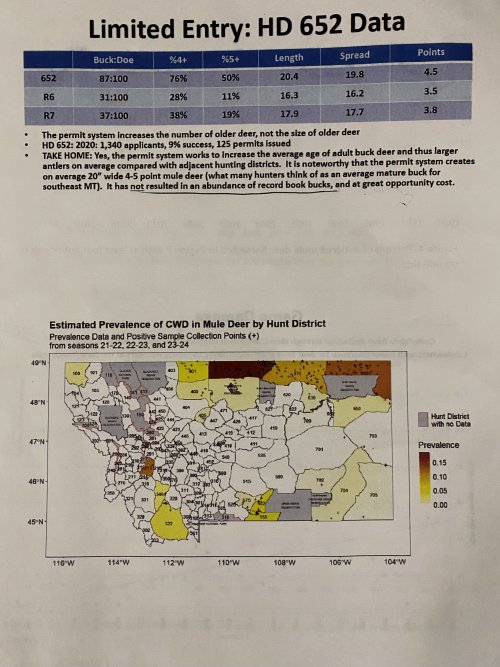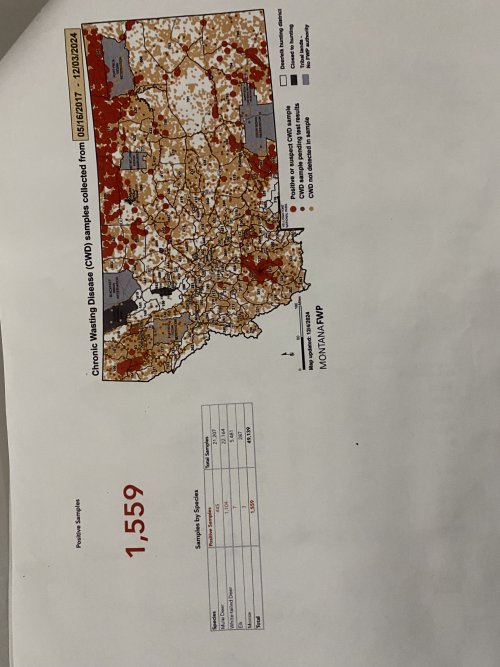Forkyfinder
Well-known member
- Joined
- Dec 13, 2023
- Messages
- 5,243
@antlerradar - if the quality was to improve, wouldnt the good hunting (with no LE) be quickly discovered and hunted hard again?I can understand that many hunters are willing to accept even lower quality hunting. I wounder how many of them will also be willing to accept the ever increasing commercialization that is sure to come with it. Quality or more accurately lack of quality hunting has always been a driving force behind commercialization of game animals. My father outfitted in the 60's and 70's, never had one hunting lease. That started to change after the winter of 78. Doug Gardiner told me he singed the first lease in Powder River Co. in the early 80's. I doubt he wanted to add the expense, but after the winter of 78 there just wasn't enough deer to go around and to provide the quality hunting his clients demanded and he had to find a way to restrict access. Leasing by outfitters increased exponentially after that. The current trend of individuals bypassing outfitters is largely driven by the low quality public hunting. People may think that it will not effect them because they don't hunt those places, but they are wrong. Every landowner has a price and the money is getting stupid big. Hunting access programs have no chance of competing if we are unwilling to trade in some opportunity for better quality. If we don't look at the past we are doomed to repeat the mistakes of the past and thinking that we could enjoy maximum opportunity and the only trade off would be lower quality was one of those mistakes.
Thats why i wish for generous LE.



